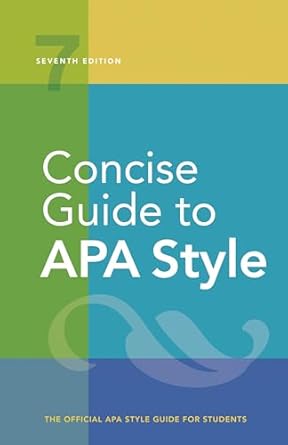[toc]
mastering reference lists a guide to accurate citations
Concise Guide to APA Style: 7th Edition (OFFICIAL)
Page 236 Review
DOCTYPE html>
Decoding Reference Lists: A Comprehensive Guide
This ebook excerpt provides a detailed overview of creating effective reference lists, emphasizing categorization and proper formatting.
It delves into various reference groups and types, offering practical guidance for accurate citations.
Understanding Reference Categories
The excerpt highlights a structured approach to reference lists, dividing sources into groups like “textual works; audiovisual media; and online media.” Each group is further broken down into numbered categories.
For instance:
- Textual Works: periodicals, books, reference works, edited book chapters, dissertations, and theses.
- Online Media: social media and webpages/websites.
“Within each category are different reference types.
For example, the periodical reference category includes journal articles, magazine articles, newspaper articles, and blog posts.
The social media reference category includes tweets, Facebook posts, and Instagram photos.” This granular classification ensures precise citation.
The Process of Creating a Reference Entry
The excerpt outlines a step-by-step process for constructing reference list entries:
- Determine the reference group and category.
- Choose the appropriate reference type within the category.
- Follow the provided example for that type.
The text emphasizes adaptability: “If the work you want to cite does not match any example, choose the group, category, and type that are most similar and adapt the format using the elements shown in the relevant template.” This allows for flexibility while maintaining consistency.
Navigating the Webpages and Websites Category
The passage addresses a common source of confusion: the term “website.” It clarifies that “website” can refer to both a reference category and a method of retrieval.
The excerpt stresses the importance of proper categorization:
“Use that category only when the work does not better fit within another category.
First ask yourself, ‘What type of work is on this website?’ Then choose the reference category in Chapter 10 that is most similar to the work you want to cite and follow the most relevant example.”
Examples and Practical Application
To illustrate this point, the text offers specific examples: “For example, to cite a report from a government website, use the reports category (Section 10.4) and follow the format for a government report (see Chapter 10, Examples 50-52).
Likewise, to cite a webpage from a government website, use the webpages and websites category (Section 10.14) and follow the format for a work on a website (see Chapter 10, Examples 98-102).”
Addressing Common Challenges
The excerpt acknowledges potential difficulties in identifying authors and publication dates for online sources: “Note that the author of a webpage or website may be difficult to determine or may be identified through context (see Section 9.7), and webpages and websites often have unknown dates of publication (see Section 9.17).”
Key Takeaways
This section of the ebook serves as a valuable resource for anyone seeking to create accurate and consistent reference lists.
By providing a clear framework and practical examples, it demystifies the citation process and promotes scholarly integrity.
The emphasis on proper categorization and adaptability ensures that users can effectively cite a wide range of sources.
Ultimately, the goal is to accurately represent the sources used in one’s work, giving credit where it is due and enhancing the credibility of the research.
The ebook excerpt provides the tools and knowledge necessary to achieve this goal.
“How a work was accessed or obtained (e.g., online, in print, via interlibrary loan) and how it is formatted (e.g., print, PDF, DVD, online streaming video) have little, if any, impact on the reference list entry.
See Chapter 10 for reference templates and examples.” Therefore the medium of the source does not impact how the source is cited.
Buy full ebook for only $18: https://www.lulu.com/shop/american-psychological-association/concise-guide-to-apa-style-7th-edition-official/ebook/product-rmzpq54.html?page=1&pageSize=4
Mastering Reference Lists A Guide To Accurate Citations
Read more: Intersectionality in Research: A Critical Analysis


Leave a Reply